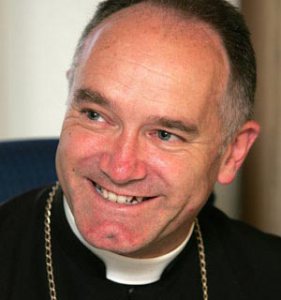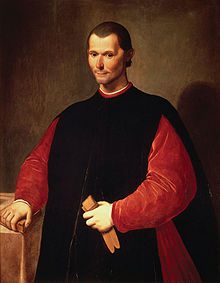From Catholic Family News…
Since at least 2011, there seems to be a never-ending stream of reports in the blogosphere and even mainstream media that Bishop Bernard Fellay is poised to sign an agreement with Rome. The most recent wave of alleged capitulation occurred this past summer. Yet here, in the autumn of 2017, Bishop Fellay and the Society of St. Pius X remain in the same canonical posture with Rome. Throughout these years of predicted compromise, a number of priests and faithful have preemptively jumped ship, deciding that a break with the SSPX was necessary before the forecasted compromise occurred. Each time a new individual or group breaks the unity of the Society, such persons claim that Bishop Fellay is walking into a Roman trap – canonical regularization – and they must flee before the trap closes. Rome, they say, wants nothing other than the destruction of the SSPX and the legacy of its founder, and that “regularization” is the bait used to lure the Society into a death trap.

Bishop Bernard Fellay
Rome’s Real Trap and Bait
Let us posit this claim as true, that the Roman authorities do share a common intention to destroy the SSPX. But what if the trap and the bait are completely different from what the defectors claim? Perhaps it is not Bishop Fellay who is poised to fall into that trap but, rather, the defectors over the years who have unwittingly taken Rome’s bait themselves.
The Modernists are clearly threatened by any attempt to hold fast to Tradition and thus seek its destruction or, at the very least, its containment. However, there are many ways to achieve that end. One way might be to lure the SSPX into a canonical recognition that was designed to subject it to Roman power in order to crush it. Yet we should consider the possibility that their strategy might be a bit more subtle, namely, to force the SSPX into a continual state of division and defections so as to keep its numbers low enough to be ignored, as opposed to luring the Society into the Conciliar Church. If this were the strategy, the Modernists could be using the constant recurring possibility of canonical regularization to divide and conquer.
A review of the past forty years would suggest that a strategy of “divide the SSPX to contain its influence” seems to explain the Roman authorities’ behavior. Although using different instruments, the goal seems fairly clear: Get as many priests and religious to leave the Society as possible so its growth is artificially controlled.
Divide and Conquer
The defection of priests has been the single most destructive blow to the SSPX. Beginning with the defection of nine sedevacantists in the early 1980s, the Society has constantly been fighting a battle to replace lost numbers rather than growing organically with new vocations. A conservative calculation suggests that, were it not for defections over the past four decades, the SSPX would have over 1,800 priests and religious (SSPX proper + affiliated communities). The Vatican would be confronted by a very different reality if Bishop Fellay spoke for so many priests and religious.
The Vatican strategy from 1988 to the early 2000s seemed to be an attempt to break up the SSPX by luring individual priests (or small groups) into regularized situations. In those cases, the bait employed was to start one’s own little SSPX with canonical recognition. The first batch left in July 1988 following the consecrations. A few more priests trickled out due to Vatican luring through the 1990s and early 2000s. The deal with the Union of St. John Vianney in Campos was the most significant success of this strategy to lure away with the carrot of setting up a new regularized group. By 2010 or thereabouts, the success of this strategy was waning. There was not much more movement after the defection of Campos and the SSPX was starting to rebuild. If my hypothesis is correct, the Vatican then changed tactics. They decided to dangle their carrot of canonical regularization in front of the Society itself, crafting the bait to give the appearance that Bishop Fellay might bite it, all the while knowing he would reject their last-minute demands. This new approach has, in fact, produced two detrimental effects: (1) It caused more defections from the Society for fear of compromise and (2) it has kept the SSPX under the stigma of canonical irregularity.
Such a strategy would explain the cycle of “doctrinal discussions” and “rapprochement” witnessed in 2009-2012 and again in 2015-2017. The Vatican makes it appear as though regularization of the SSPX is imminent. They even take some concrete steps to make the story plausible (e.g. the Motu Proprio granting more tolerance of the old Mass, nullification of the 1988 excommunications, conferral of ordinary jurisdiction for Confession and Marriage). They make suggestions that a relaxation of total adherence to Vatican II is possible. As expectations rise, so do fears and conspiracy theories claiming capitulation is just around the corner. As a result, priests and faithful once again start abandoning ship. And then, at the eleventh hour, Rome adds a demand they know Bishop Fellay will never accept and thus ends the cycle with the SSPX still “irregular” and a path of devastation through the ranks of the Society.
New Strategy Proves Successful
From the perspective of the enemies of Tradition, this new strategy has been more successful then luring away individual or small groups of priests to regularization, as with the FSSP founders and the priests of Campos. This “scare and disperse” tactic has resulted not only in the loss of individual priests and religious but also high-ranking and internationally respected figures of the Society. It has also driven a wedge between the SSPX and several previously affiliated religious orders, resulting in entire monasteries and orders breaking from the Society. Even better, from the enemies’ perspective, it does not result in these priests who favor Tradition and the traditional Mass coming into the Conciliar Church. The defectors in this new wave have not founded or joined Ecclesia Dei communities; rather, they have gone truly independent, scattering to the four winds.
Although it is true that the price of canonical recognition for Ecclesia Dei communities has been compromise and silence, their presence within the Conciliar Church is still a thorn in the side of the Modernist destroyers. Even if they are silent about the illicit nature of the New Mass, they spread awareness of the ancient liturgy and preach some traditional doctrines. These “troublesome” conservative or traditional-leaning priests would be less trouble if they were both outside the Conciliar Church and separate from the SSPX. That would diminish the influence of Tradition within the mainstream Church as well as weaken the witness and position of the SSPX by constantly reducing its numbers (notwithstanding the flourishing of new vocations). It would also result in the continued marginalization of the Society in the Modernist twilight zone of “less-than-full communion.”

Niccolò Machiavelli, 1469-1527
Perhaps the Modernists are not so Machiavellian or organized enough to come up with such a grand scheme, but the results of the past 10 to 12 years are consistent with such a plan. The latest cycle seems to have fizzled out in familiar fashion, with Cardinal Müller demanding use of the post-Conciliar Declaration of Faith and adherence to all the documents of the Council and post-Conciliar papal teachings. After six years of talks with Bishop Fellay, the Cardinal had to know these demands would seal the fate of the latest talks in a rejection by Bishop Fellay. Yet the cycle has yielded more fruit for the enemies of Tradition. The unilateral conferral of jurisdiction for Marriage, the last salvo before killing the prospects of recognition for now, yielded more defections and divisions in the heart of the SSPX in France.
United We Stand, Divided We Fall
If my theory is correct, then in the early 2000s the Vatican authorities changed their strategy from luring individuals and small groups into regularization to causing division within the SSPX by creating the appearance of a regularization that would never actually happen. If this is true, then it is not Bishop Fellay who has fallen into their trap but, rather, the priests who abandoned him and the Society to which they made promises. By their defection, they have weakened the single most effective force for Tradition the post-Vatican II Church has ever seen, all for fear of a theoretical compromise with Rome that has never happened. Rather than confronting the Modernists with thousands of priests and religious, the clerical and consecrated souls of the Society numbers less than 700 while the ranks of defectors suffer further ruptures and isolation. The enemies of Tradition could not have hoped for more.
In the Gospel, Our Lord tells us: “Every kingdom divided against itself shall be made desolate: and every city or house divided against itself shall not stand” (Matt. 12:25). May all the members of the SSPX – priests, religious, and lay faithful – take His words to heart and strive “to keep the unity of the Spirit in the bond of peace” (Eph. 4:3).
This article originally appeared in the November 2017 issue of Catholic Family News.
Take Our Poll
Comments invited – how did you vote in the poll?





